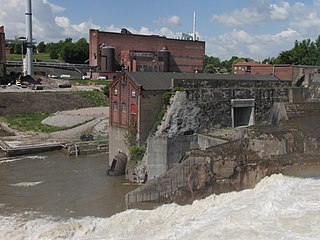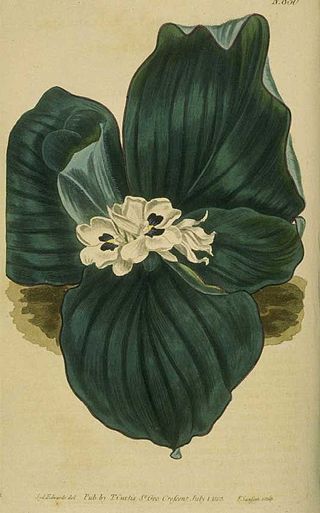Antioxidants are compounds that inhibit oxidation, a chemical reaction that can produce free radicals. Autoxidation leads to degradation of organic compounds, including living matter. Antioxidants are frequently added to industrial products, such as polymers, fuels, and lubricants, to extend their usable lifetimes. Foods are also treated with antioxidants to forestall spoilage, in particular the rancidification of oils and fats. In cells, antioxidants such as glutathione, mycothiol, or bacillithiol, and enzyme systems like superoxide dismutase, can prevent damage from oxidative stress.

Food preservation includes processes that make food more resistant to microorganism growth and slow the oxidation of fats. This slows down the decomposition and rancidification process. Food preservation may also include processes that inhibit visual deterioration, such as the enzymatic browning reaction in apples after they are cut during food preparation. By preserving food, food waste can be reduced, which is an important way to decrease production costs and increase the efficiency of food systems, improve food security and nutrition and contribute towards environmental sustainability. For instance, it can reduce the environmental impact of food production.
A preservative is a substance or a chemical that is added to products such as food products, beverages, pharmaceutical drugs, paints, biological samples, cosmetics, wood, and many other products to prevent decomposition by microbial growth or by undesirable chemical changes. In general, preservation is implemented in two modes, chemical and physical. Chemical preservation entails adding chemical compounds to the product. Physical preservation entails processes such as refrigeration or drying. Preservative food additives reduce the risk of foodborne infections, decrease microbial spoilage, and preserve fresh attributes and nutritional quality. Some physical techniques for food preservation include dehydration, UV-C radiation, freeze-drying, and refrigeration. Chemical preservation and physical preservation techniques are sometimes combined.

Butylated hydroxytoluene (BHT), also known as dibutylhydroxytoluene, is a lipophilic organic compound, chemically a derivative of phenol, that is useful for its antioxidant properties. BHT is widely used to prevent free radical-mediated oxidation in fluids and other materials, and the regulations overseen by the U.S. F.D.A.—which considers BHT to be "generally recognized as safe"—allow small amounts to be added to foods. Despite this, and the earlier determination by the National Cancer Institute that BHT was noncarcinogenic in an animal model, societal concerns over its broad use have been expressed. BHT has also been postulated as an antiviral drug, but as of December 2022, use of BHT as a drug is not supported by the scientific literature and it has not been approved by any drug regulatory agency for use as an antiviral.
Rancidification is the process of complete or incomplete autoxidation or hydrolysis of fats and oils when exposed to air, light, moisture, or bacterial action, producing short-chain aldehydes, ketones and free fatty acids.

Vanillin is an organic compound with the molecular formula C8H8O3. It is a phenolic aldehyde. Its functional groups include aldehyde, hydroxyl, and ether. It is the primary component of the extract of the vanilla bean. Synthetic vanillin is now used more often than natural vanilla extract as a flavoring in foods, beverages, and pharmaceuticals.

Browning is the process of food turning brown due to the chemical reactions that take place within. The process of browning is one of the chemical reactions that take place in food chemistry and represents an interesting research topic regarding health, nutrition, and food technology. Though there are many different ways food chemically changes over time, browning in particular falls into two main categories: enzymatic versus non-enzymatic browning processes.

An aroma compound, also known as an odorant, aroma, fragrance or flavoring, is a chemical compound that has a smell or odor. For an individual chemical or class of chemical compounds to impart a smell or fragrance, it must be sufficiently volatile for transmission via the air to the olfactory system in the upper part of the nose. As examples, various fragrant fruits have diverse aroma compounds, particularly strawberries which are commercially cultivated to have appealing aromas, and contain several hundred aroma compounds.

Catechol, also known as pyrocatechol or 1,2-dihydroxybenzene, is an organic compound with the molecular formula C6H4(OH)2. It is the ortho isomer of the three isomeric benzenediols. This colorless compound occurs naturally in trace amounts. It was first discovered by destructive distillation of the plant extract catechin. About 20,000 tonnes of catechol are now synthetically produced annually as a commodity organic chemical, mainly as a precursor to pesticides, flavors, and fragrances. Small amounts of catechol occur in fruits and vegetables.

Hydroquinone, also known as benzene-1,4-diol or quinol, is an aromatic organic compound that is a type of phenol, a derivative of benzene, having the chemical formula C6H4(OH)2. It has two hydroxyl groups bonded to a benzene ring in a para position. It is a white granular solid. Substituted derivatives of this parent compound are also referred to as hydroquinones. The name "hydroquinone" was coined by Friedrich Wöhler in 1843.

Borregaard is a Norwegian company, established in 1889 in the southeastern town of Sarpsborg in Østfold county. Its main products were traditionally pulp and paper. The company later started producing chemicals based on timber as a raw material. After a takeover in 1986, Borregaard was part of the chemical division of the Orkla Group until it was spun off and introduced to the Oslo Stock Exchange in October 2012. It had 1050 employees in 2016.

Albemarle Corporation is an American specialty chemicals manufacturing company based in Charlotte, North Carolina. It operates 3 divisions: lithium, bromine specialties and catalysts.

Ethoxyquin (EMQ) is a quinoline-based antioxidant used as a food preservative in certain countries and originally to control scald on pears after harvest. It is used as a preservative in some pet foods to slow the development of rancidity of fats. Ethoxyquin is also used in some spices to prevent color loss due to oxidation of the natural carotenoid pigments.

tert-Butylhydroquinone is a synthetic aromatic organic compound which is a type of phenol. It is a derivative of hydroquinone, substituted with a tert-butyl group.

Kaempferia galanga, commonly known as kencur, aromatic ginger, sand ginger, cutcherry, is a monocotyledonous plant in the ginger family, and one of four plants called galangal. It is found primarily in open areas in Indonesia, southern China, Taiwan, Cambodia, and India, but is also widely cultivated throughout Southeast Asia.

Protocatechuic acid (PCA) is a dihydroxybenzoic acid, a type of phenolic acid. It is a major metabolite of antioxidant polyphenols found in green tea. It has mixed effects on normal and cancer cells in in vitro and in vivo studies. It is produced commercially from vanillin.
Warmed-over flavor is an unpleasant characteristic usually associated with meat which has been cooked and then refrigerated. The deterioration of meat flavor is most noticeable upon reheating. As cooking and subsequent refrigeration is the case with most convenience foods containing meat, it is a significant challenge to the processed food industry. The flavor is variously described as "rancid," "stale," and like "cardboard," and even compared to "damp dog hair." Warmed-over flavor is caused by the oxidative decomposition of lipids in the meat into chemicals which have an unpleasant taste or odor. This decomposition process begins after cooking or processing and is aided by the release of naturally occurring iron in the meat.
Dilip Dandekar was the chairman and managing director of Kokuyo Camlin Ltd., taking office from June 1, 2002. He joined Camlin Ltd. as a management trainee under his father, D. P. Dandekar and uncle, G. P. Dandekar, who were the founders of the company.
The chemical industry of India is a major industry in the Indian economy and as of 2022, contributes 7% of the country's Gross Domestic Product (GDP). India is the world's sixth largest producer of chemicals and the third largest in Asia, as of 2022. The value of the Indian chemical industry was estimated at $100 billion dollars in 2019. The chemical industry of India generates employment for five million people. The Indian chemical industry produces 80,000 different chemical products. India was also the third largest producer of plastic in 2019. As of September 2019, the alkali chemical industry produced 71% of all chemicals produced in India. India's chemical industry accounts about 14% of production in Indian industries.













